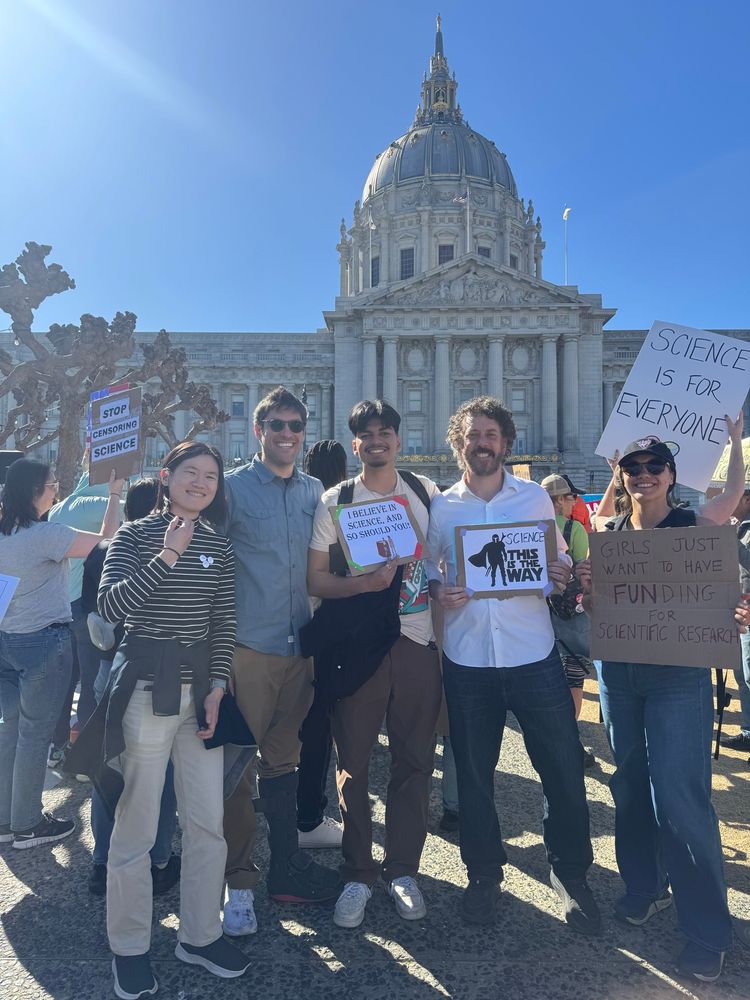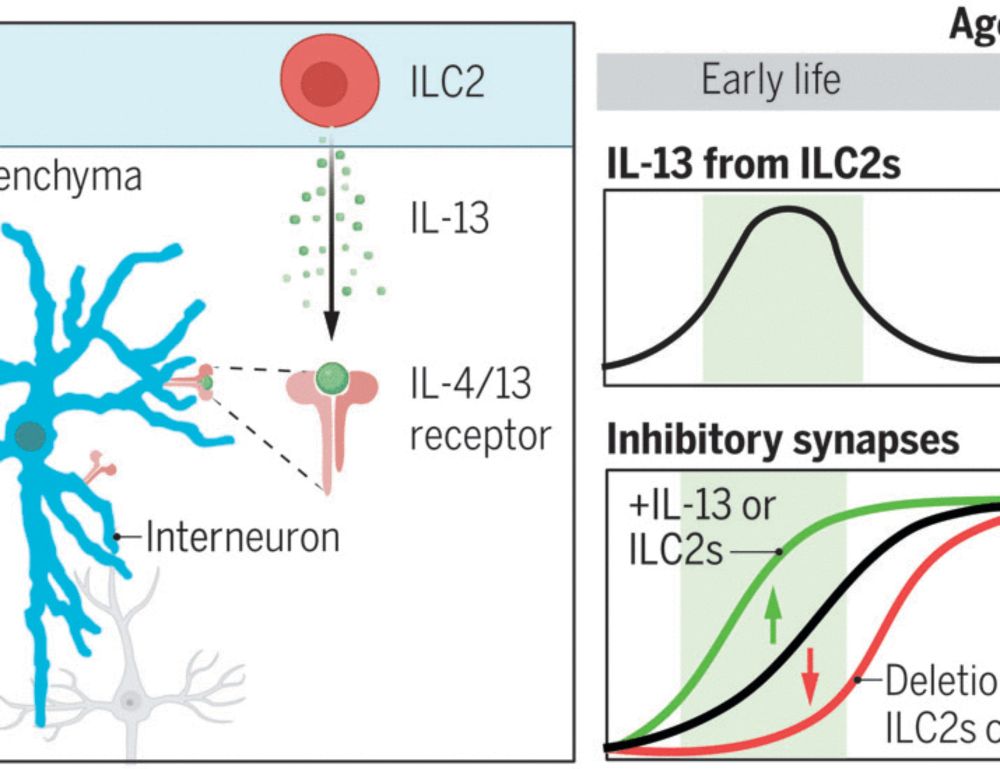Type 1 immune response reduces seizure risk after traumatic brain injury
Nature Reviews Immunology - A preprint by Mroz et al. reports a role for IFNgamma in protecting against seizures after traumatic brain injury.
NEW @preprintclub.bsky.social Journal Club by Jennifer Ahn & @jengommerman.bsky.social highlighting a @biorxiv-immuno.bsky.social paper by @arimolofskylab.bsky.social, Jeanne Paz and colleagues that reports a role for IFNg in protecting against seizures after traumatic brain injury
05.03.2025 09:15 — 👍 12 🔁 5 💬 0 📌 0
Agree! An honor to receive the Bowes award together with @kampmann.bsky.social - a testament to the incredible collaborations at @ucsfhealth.bsky.social that make our science possible!
07.03.2025 22:44 — 👍 22 🔁 4 💬 1 📌 1
The study section I sit on (Innate Immunity B) will be rescheduled to April.
Just putting this out there since folks have been getting no notifications about whats going on with their grants.
01.03.2025 01:18 — 👍 113 🔁 21 💬 1 📌 0
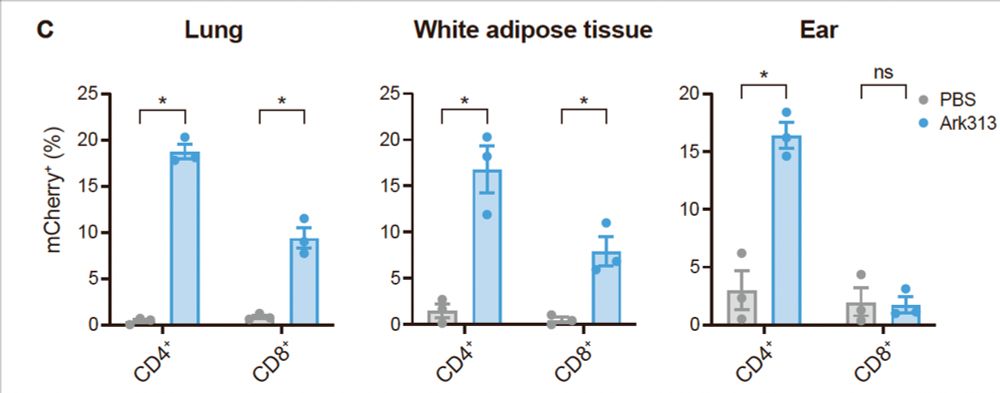
3/ With a single IV injection, Ark313 achieves gene delivery in up to 25% of T cells, in both circulating and tissues, including tissue resident memory! This unlocks new possibilities for studying T cell function in their natural niche. (🙏 to Roberto Ricardo Gonzalez and @arimolofskylab.bsky.social)
04.02.2025 20:50 — 👍 2 🔁 1 💬 1 📌 0
Cool perspective on the role of brain extracellular matrix!
17.01.2025 19:37 — 👍 0 🔁 0 💬 0 📌 0
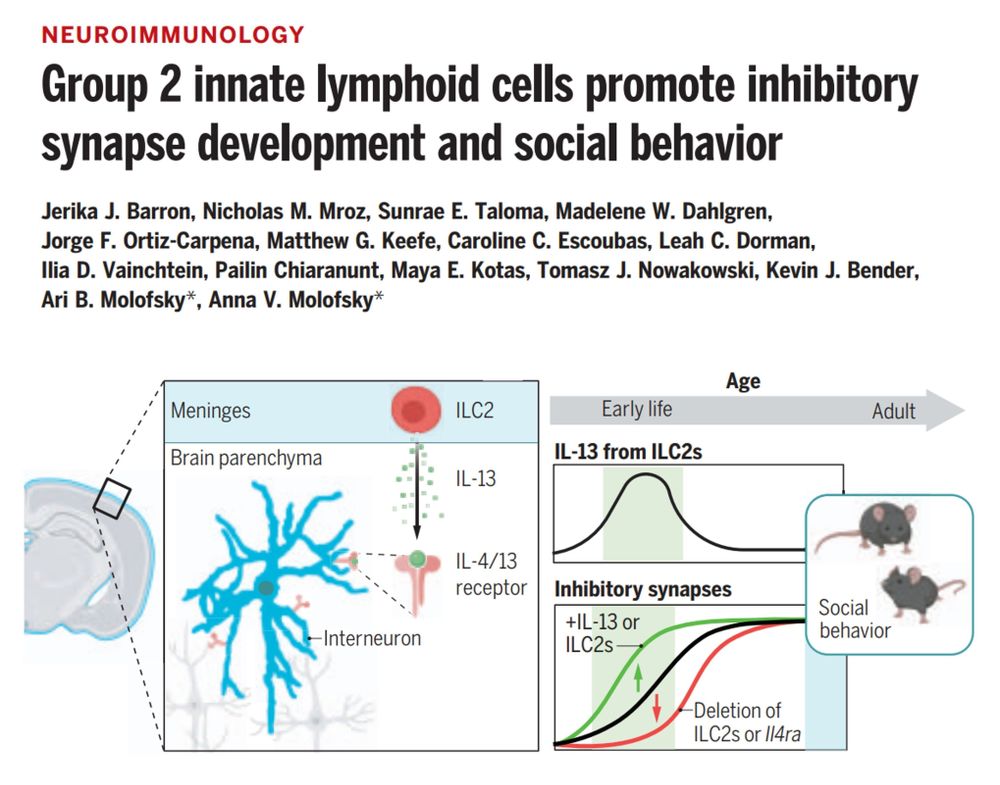
In Nov '24: ILC2s promoted formation of inhibitory synapses during a period of postnatal brain development in mice. This influenced social behaviour in the adult mice.
https://buff.ly/49yODYd
From @annamolofskylab.bsky.social and @arimolofskylab.bsky.social et al
#Neuroimmunology @science.org
11.12.2024 17:28 — 👍 14 🔁 4 💬 0 📌 0
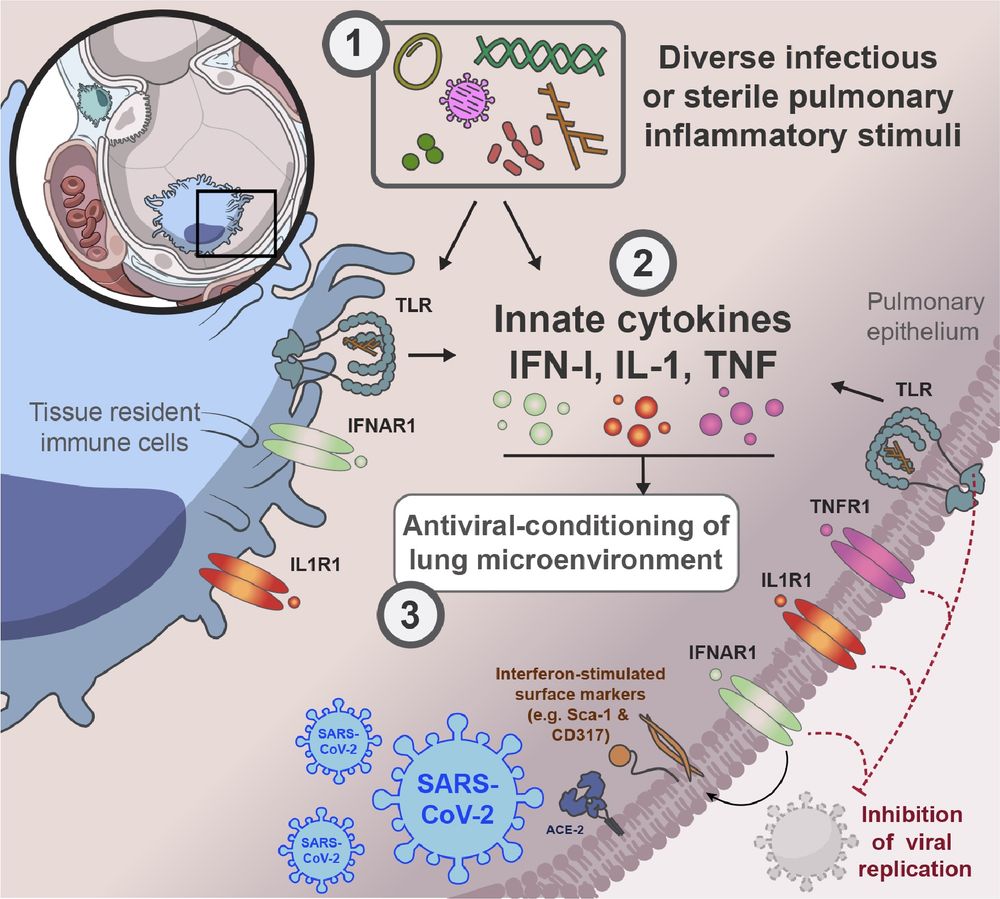
Graphical summary of our paper. In mice, prior lower airway exposure to diverse inflammatory stimuli, including chronic bacterial infections such as M. tuberculosis, acute bacterial infections such as pulmonary S. aureus, viral infections such as Influenza A, type-II allergic responses such as the OVA-Alum model, activation of pulmonary TLR9 by CpG or pulmonary TLR1/2 by Pam3CSK4
leads to reduced viral burden upon subsequent infection with SARS-CoV-2 (SCV2). (2) This SCV2 restriction occurs prior to induction of SCV2-specific adaptive immune responses
and is mediated through innate immune responses, including the induction of IFN-I, TNFα and IL-1 and sustained changes to the TRM (Tissue resident macrophage) cellular
compartment and the pulmonary epithelium. (3) Innate cytokine and TLR signaling to both recruited immune cells and the pulmonary epithelium creates a microenvironment in the
lung that limits early replication of SCV2. IFN-I signaling to pulmonary ECs (epithelial cells) increases expression of interferon-stimulated genes, that likely cell-intrinsically limit viral
replication. TNF- or IL-1 suppress SCV2 independently of IFN-I signaling. TNF acts exclusively through radio-resistant cell types such as the lung epithelium, whereas IL-1 affords
control both direct and indirectly, through either stromal and hematopoietic cell types, to restrict overall early SCV2 burden.
Best #Nikolaus 🎅! Our paper on how the 🫁 microenvironment can shape #innate immunity against #viruses is out @sciimmunology.bsky.social This was a herculean effort brilliantly led by @pauljbaker.bsky.social who singlehandedly established the model in the lab during the pandemic. 🧪 #Immunosky 1/9
06.12.2024 22:37 — 👍 295 🔁 83 💬 29 📌 9
